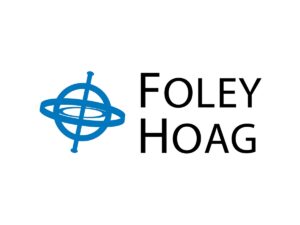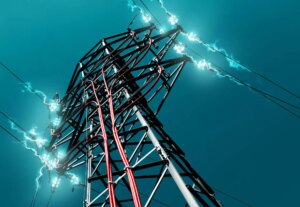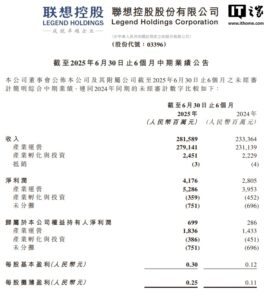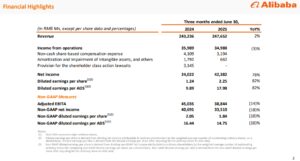7月12日,四川成都,暴雨引发山洪,救援队伍紧急转移被困群众
快速阅读: 2023年,SNC发射首个Vindlér 1.0纳米卫星星座,利用空间射频技术提供精确地物定位与信号检测,增强战场态势感知与决策能力,计划2025年升级至Vindlér 2.0,扩大数据收集量至每日1.5TB,助力反恐、打击非法捕鱼等国家安全任务。
Home
News Archive
Learn How SNC’s Space-Based RF Technology Vindlér® Empowers Situational Awareness and Decision Making
BLOG
Learn How SNC’s Space-Based RF Technology Vindlér® Empowers Situational Awareness and Decision Making
As a global aerospace and national security leader with more than 60 years of experience, SNC has an eye for anticipating what its customers need to stay ahead in the fight. With the emergence of near-peer threats and an increase in anti-access/area denial (A2/AD) environments, the United States faces a growing need for global coverage and visibility into denied areas. Signals detection and geolocation provide critical insight into adversarial movements and fill intelligence gaps with integrated data for all-domain operations.
The Challenge:
In this new phase of conflict, accurate information intelligence provides the advantage. How do we capture, assess and deliver the data needed to give our military the most comprehensive and accurate view of their operational environment to improve situational awareness and decision making?
The Solution:
For SNC, the answer was simple. Leverage its expertise in signals intelligence and data analytics – particularly in radio frequency (RF) signals data – in a way that could cover the largest area possible.
Vindlér is a space-based RF collection and analysis tool able to detect and geo-locate certain objects based on targeted RF emissions and provide these results directly to the end-user. Complex algorithms can then correlate unknown activity across maritime and other environments for suspicious behavior. Flown on a constellation of satellites, Vindlér enables U.S. mission partners and allies to achieve greater situational awareness across domains, whether that be, sea, air, land or space.
Building a Roadmap from Scratch
“First, we saw an increasing need to collect on radio frequency signals just to have a general understanding of what was going on in different operational environments,” said David Lynch, director of programs for SNC’s MST business area. “We wanted the flexibility to identify signals of interest. This is more easily achievable in space with software-defined radios.”
Lynch said the SNC team quickly realized that by having the ability to collect simultaneous signals you stand a better chance of understanding the battlespace. Even if a dark vessel or illegal fishing boat turned off its Automatic Identification Systems (AIS) transponders, operators were probably still using maritime radars or push to talk radios that put out RF signals to communicate. This is what makes RF detection and geo-location the key to SNC’s solution. But as the company began to use and assess existing commercial data sources it identified gaps in the market and opportunities to lead the charge.
“There really aren’t very many providers out there collecting space-based, geo-located RF signals; the demand far outweighs the supply,” said Lynch. “We also had concerns about the quality and accuracy of the data that we were getting from some sources. We saw geo-locations that were accurate between five and 20 kilometers. That was an okay start, but we wanted to see if we could get that down to one kilometer by marrying that data to other high-fidelity sources.”
To get within that range of accuracy, SNC needed to see more of the spectrum and decided to explore different collection modes, ultimately leading it back to space.
Why Space-based RF Geo-location?
Currently operational and on-orbit, SNC’s first constellation of nanosatellites, Vindlér 1.0 launched in 2023. The company is also on track to add three larger ESPA class satellites, Vindlér 2.0, to the constellation in 2025.
But why did SNC need a space-based platform to solve this problem? What advantages does space provide?
“Before we could do signals collection fairly easily with overhead and airborne sources because we were operating in more permissive airspace,” said Baker Beard, director of business development for MST. “We could put up drones or aircraft over key conflict areas without much of an issue. Now, with the rise of the Great Power competition, we can’t do that same type of CONOPS. A space-based platform enables us to get daily global collection over areas that we might not be able to reach otherwise without putting aircraft or airmen at risk.”
Vindlér is designed to detect and geo-locate specific objects from low-Earth orbit (LEO) based on targeted RF emissions to better understand the GNSS spectrum and potential risks for interference. Each Vindlér 1.0 satellite downlinks up to 4GB of data per day and geo-locates emitters to within one kilometer.
The Vindlér 2.0 satellites will significantly enhance the duty cycle and ability to simultaneously collect multiple signals of interest over an unprecedented range of the RF spectrum. This will increase the amount of data that each satellite can collect and store onboard for downlink to potential volumes up to 1.5TB per day. For SNC’s customers, the ability to collect more data and perform additional downlinks means more insight with the goal of delivering those insights to servicemembers as soon as possible.
Growing Mission Applications
Vindlér provides valuable commercial capabilities to manage RF emissions and safeguard against RF and GPS interference in an efficient, low-risk and cost-effective manner. It can be used to track dark vessels, GPS jammers and more in support of national security efforts.
For example, this capability has immediate benefits to ally nations for detecting dark vessels and countering Illegal, Unreported and Unregulated (IUU) fishing. While these ships attempt to obscure their location and activities by disabling mandatory systems, other devices emit RF signals. Vindlér will benefit teams that enforce sanctions, carry out interdictions and protect vital natural resources.
Other applications include improved emergency response efforts when GPS is unavailable or unreliable, protection of other types of wildlife and natural resources; and the ability to set a baseline for activity in hostile environments prior to making critical battlespace decisions.
What’s Next?
SNC says Vindlér mission applications will only continue to expand as the constellation hosting it does. From the start, the team took a risk and invested significantly more in the added propulsion required to fly its satellites in the staggered formation needed to achieve one-kilometer geo-location accuracy. While other companies fly a more standard line formation, a staggered formation essentially allows Vindlér to surround the target space, delivering a better view that optimizes those geo-location calculations.
SNC will continue to invest more in the propulsion and maneuverability of its satellites for the best geo-location accuracy possible. Over the next several years the company plans to grow the capability to 20 satellite clusters. The program is already discussing customer requirements for Vindlér 3.0.
“A key differentiator for SNC is that we truly partner with our customers,” said Beard. “We can take requirements from our customers and create a more bespoke solution as mission needs evolve.”
The progression from Vindlér 1.0 to 2.0 is an example of this customer-centric approach. First generation users expressed the need for more frequency captures to increase accuracy and cover wider areas of observation. SNC utilized that feedback to identify additional technology partners and develop a new satellite cluster, Vindlér 2.0, within 12 months.
SNC brings more than 14 years of experience developing advanced algorithms, analytics, process automation and leading laboratories to the project. The company continues to layer on additional data analytics tools, including its Digital Grid™ solution, to make near real-time insights a reality that will improve both situational awareness and critical battlespace decision making.
“We’re making a lot of strides in data analytics and specifically how that information can be processed at the edge, at the sensor and onboard the satellite,” said Lynch. “We also want to accelerate the transport of that data to get those insights to the end-user in the tactical environment as quickly as possible.”
(以上内容均由Ai生成)








